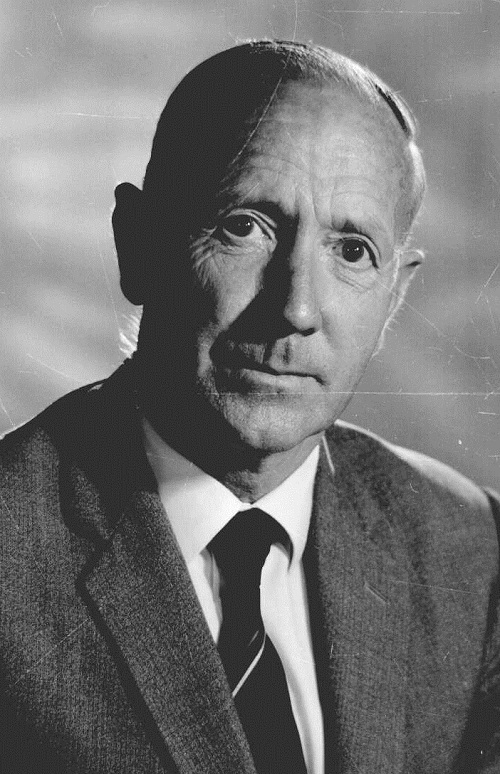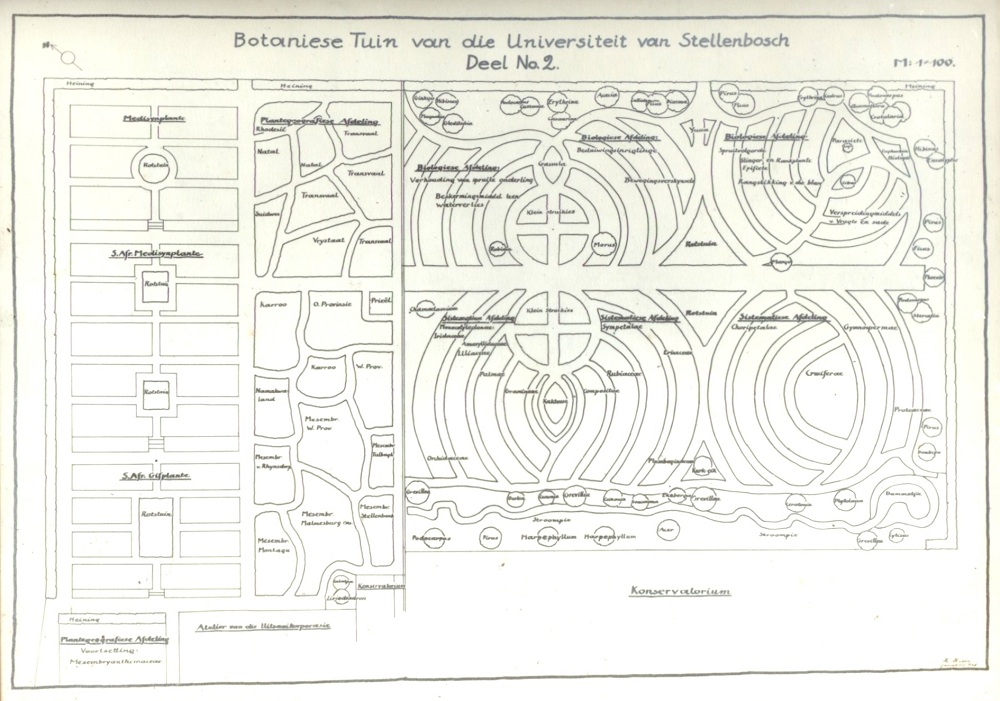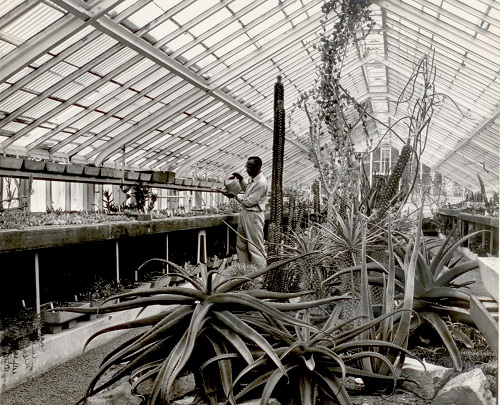The history of the Stellenbosch University Botanical Garden dates back to 1902 when lecturer Dr Augusta Vera Duthie grew plants next to the then Main Building on campus for research and student practicals. Owing to the efforts of Dr Gert C. Nel, professor of Botany at the time, the
University Council allocated the current site for the Botanical Garden in 1921. In 1922 work on the Botanical Garden was started and in 1925 Dr Hans Herre was appointed as curator. In 1930 Mr Helmut Meyer was appointed as the first horticulturalist. Because of their efforts the Garden quickly gained international recognition. Many species and genera were named after them including Meyerophytum meyeri, Herreanthus meyeri and Cyrtanthus herrei. Dr Herre also made international headlines in 1949 when the Welwitschia mirabilis
plants he had grown from seed 23 years earlier coned and succesfully
set seed, the first plants in cultivation to do so.Past curators of the
SU Botanical Garden include Dr Hans Herre
(1925-1962), Mr Wim Tijmens (1962–1999) and Mr Deon Kotze (1999–2012).
.jpg)



(L-R) Dr Augusta V. Duthie, Dr Gert C. Nel, Dr Hans Herre and Mr Helmut Meyer


(L-R) Layout of the "upper garden" (the part of the Botanical Garden bordering Neethling Street) from 1948; The "upper garden" in 1930 with Harmonie and Monica hostels in the background.
The Botanical Garden's initial design was inspired by classical botanical gardens focussed on teaching students, such as the well-known botanical garden in Padua, Italy. The only remnant of this early design can be seen today in the Botanical Garden's formal herb garden. Some of the first plants planted in the Garden can also still be viewed today, and although outside their initial intended context, gives a good insight into the Garden's early functions.


(L-R) Arid house in 1965; Waterlily ponds (circa 1970)

